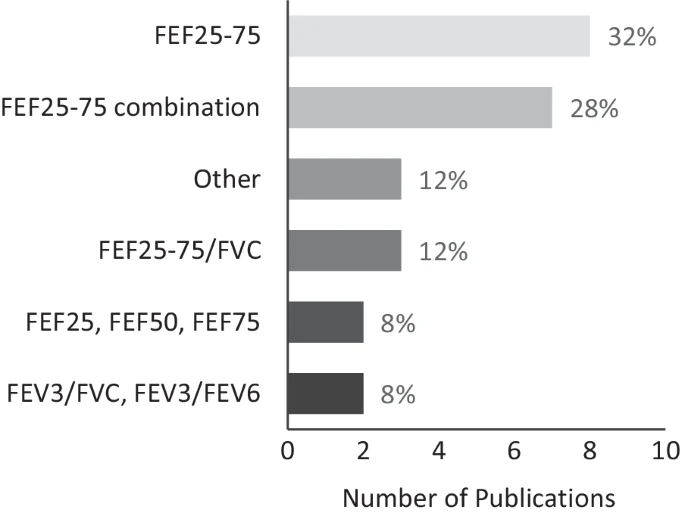- Research
- Open Access
Background
The assessment of small airways obstruction (SAO) using spirometry is practiced in population-based studies. However, it is not clear what are the most used parameters and cut-offs to define abnormal results.
We searched three databases (Medline, Web of Science, Google Scholar) for population-based studies, published by 1 May 2021, that used spirometry parameters to identify SAO and/or provided criteria for defining SAO.
We systematically reviewed these studies and summarised evidence to determine the most widely used spirometry parameter and criteria for defining SAO. In addition, we extracted prevalence estimates and identified associated risk factors. To estimate a pooled prevalence of SAO, we conducted a meta-analysis and explored heterogeneity across studies using meta regression.Twenty-five studies used spirometry to identify SAO. The most widely utilised parameter (15 studies) was FEF25–75, either alone or in combination with other measurements. Ten studies provided criteria for the definition of SAO, of which percent predicted cut-offs were the most common (5 studies). However, there was no agreement on which cut-off value to use. Prevalence of SAO ranged from 7.5% to 45.9%. As a result of high heterogeneity across studies (I2 = 99.3%), explained by choice of spirometry parameter and WHO region, we do not present a pooled prevalence estimate.
There is a lack of consensus regarding the best spirometry parameter or defining criteria for identification of SAO. The value of continuing to measure SAO using spirometry is unclear without further research using large longitudinal data.

No comments:
Post a Comment